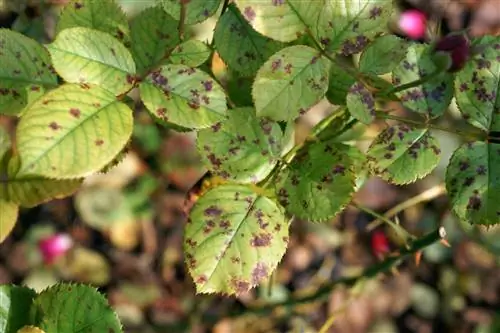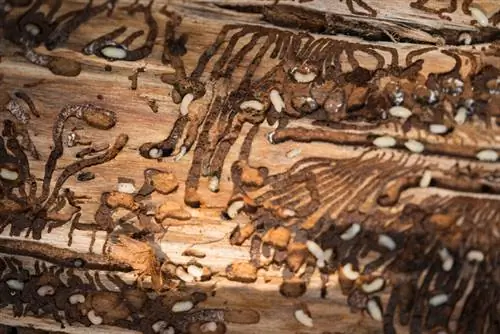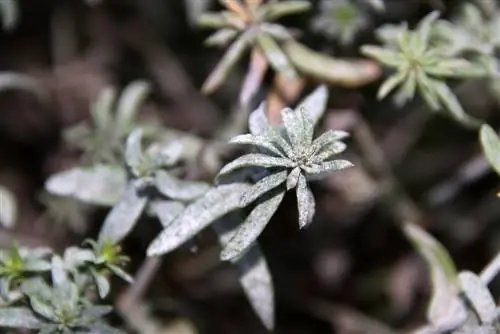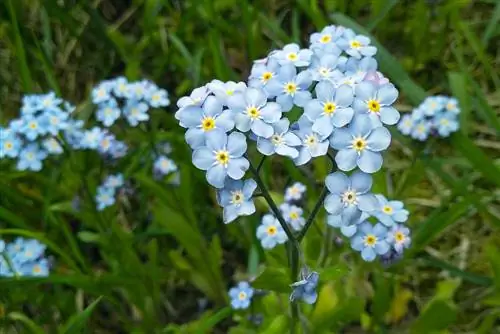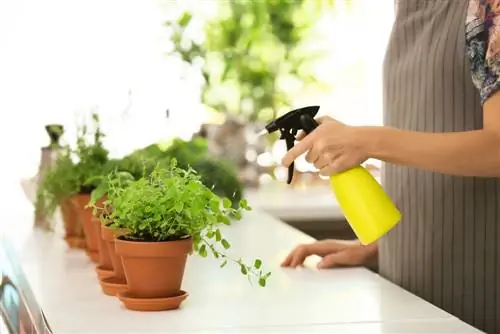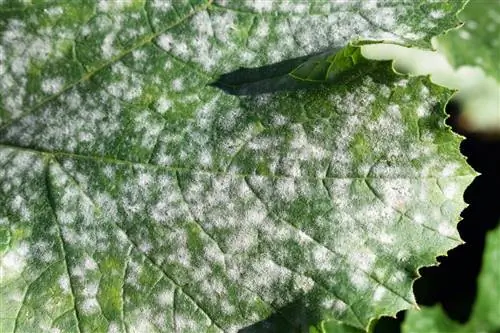- Author admin [email protected].
- Public 2023-12-16 16:46.
- Last modified 2025-01-23 11:22.
The dreaded downy mildew does not occur on roses as often as true mildew. However, if fertilization with a lot of nitrogen and a cool and wet spring, the fungal disease can threaten your roses.
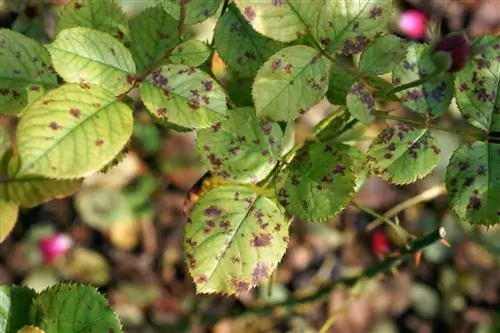
What do I do about downy mildew on roses?
You can combat downy mildew on roses withproducts containing wet sulfur such as sulfuric clay. Other options include potassium hydroxide. However, both substances can accumulate in high concentrations in the soil and harm beneficial insects.
How do I recognize downy mildew on roses?
Typical of the pathogen that causes downy mildew, the fungus “Peronospora sparsa,” are yellow-brown to purple spots on the upper sides of the leaves. The typical fungal lawn forms on the undersides of the leaves. In the later stages the leaves are shed and the shoots wither. If untreated, the fungus can lead to the death of the plant.
How do I combat downy mildew on roses in an environmentally friendly way?
Downy mildew on roses isdifficult to control You often don't hit all the fine leaves with one spray jet. For the sake of the environment, it still makes sense to choose home remedies such as garlic broth or horsetail tea to combat the fungus first. The fungus can be easily contained through repeated treatment and targeted care measures.
How do I prevent downy mildew on roses?
There area number of measures with which you can prevent the formation of powdery mildew on the leaves.
- Do not plant roses too closely or against walls because the leaves cannot dry there easily
- Loose the soil regularly to prevent moisture from accumulating
- No one-sided fertilization with too much nitrogen
- Do not water in the evening so that the moisture can escape
- Prune your roses regularly so that the leaves inside can dry well.
Tip
Important care measures for downy mildew on roses
First you should remove all infected parts of the plant. This also includes leaves that have already fallen to the ground. To prevent the spores in the soil from spreading back to the leaves the next time it rains, mulch the plants thickly.

